
Callithamnion pikeanum
Beauty Bush
9 May 2024
Tonquin Beach, Templar Channel, Vancouver Island, B.C., Canada
Tide: 0.2 feet at 08:29 PDT (measured at Tofino Tidal Station)
Weather: Clear, wind variable 0-5 km/hour, sea smooth, very low southwesterly swell, humidity 75%, 11 ˚C.
Moon: Waxing Crescent (3.1%, 2 days); Next Phase, First Quarter, 15 May 2024 at 4:48am pm PDT; Previous Phase, New Moon, 7 May 2024 at 8:21 pm PDT.
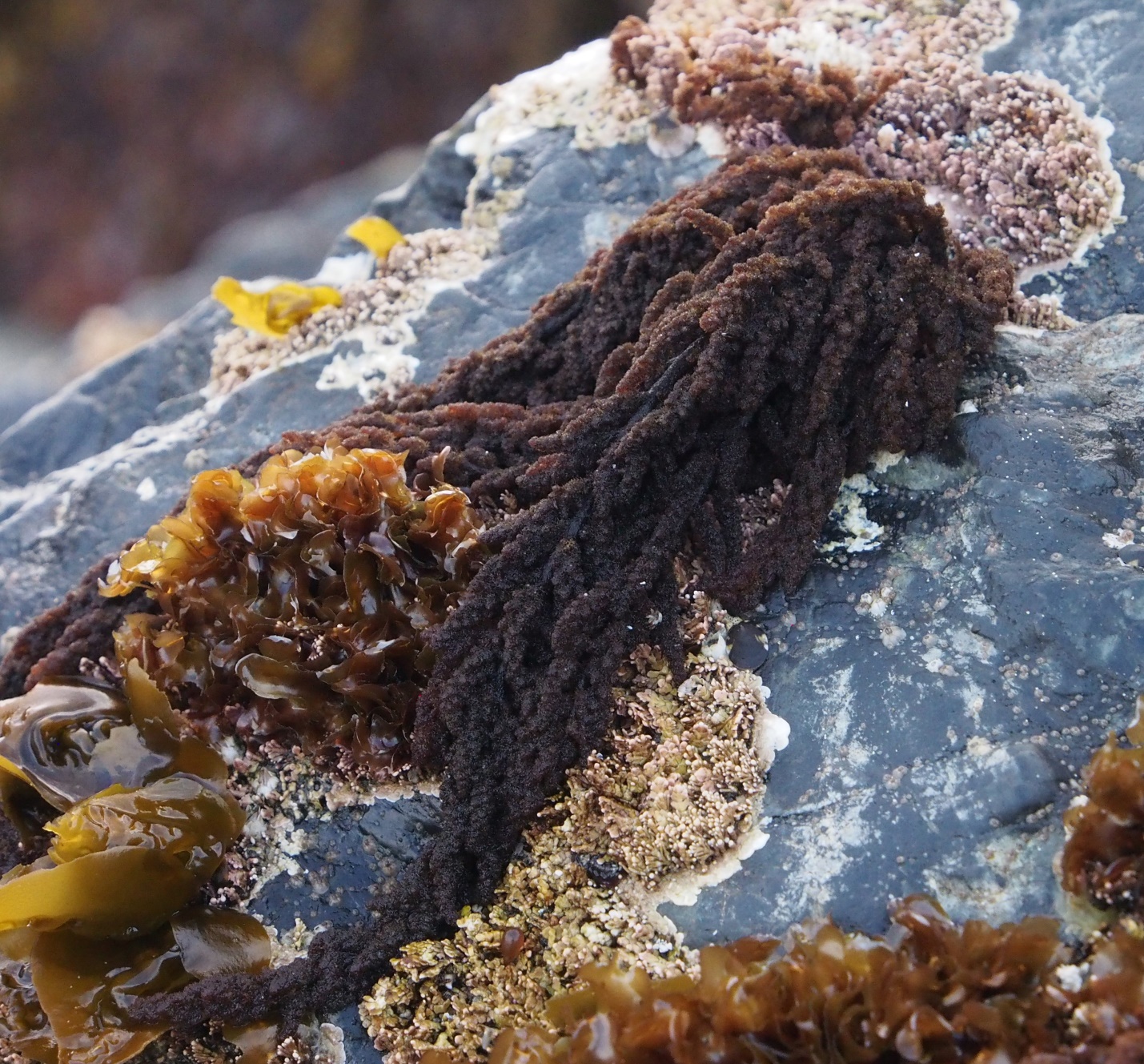
Figure 1: One very fine example of Callithamnion pikeanum is pictured here. It is growing in the high mid-intertidal zone alongside species such as Sea Cabbage, Hedophyllum sessile, and Iridescent Horn of Plenty, Mazzaella splendens. The dark brown, draping, woolly thalli are distinctive. Tonquin Beach, Templar Channel, Vancouver Island, BC, Canada. May 8, 2024. Photo ID 27686 ©Seaweedwhisperings.com
Person 1:
Furry, blurred, hides detail.
Hides in plain view.
Coarse wool – keeps one warm and cozy and protected.
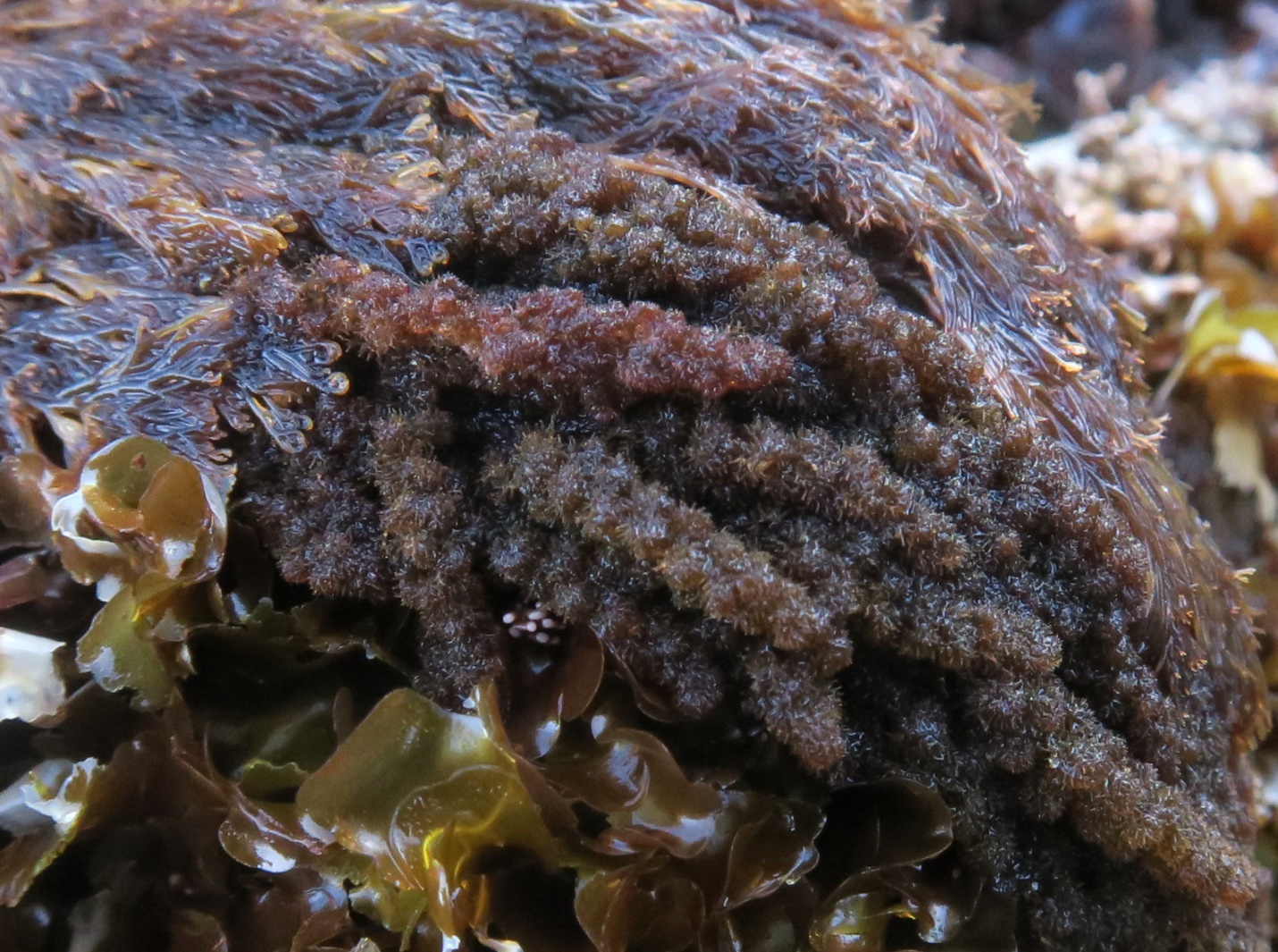
Figure 2: A close view shows some of the branch tips of Callithamnion pikeanum. It is blanketed from above by some Microcladia borealis. There is interesting detail to this seaweed, but it really is difficult to see in many conditions. Tonquin Beach, Templar Channel, Vancouver Island, BC, Canada. May 9, 2024. Photo ID 27687 ©Seaweedwhisperings.com
Person 2:
Like rich brown colored ‘dreadlocks’ that intertwine gently and terminate in a softly pointed tip, you grow on the rocks draping downward, Callithamnion pikeanum.
Whenever I try to “understand” what your structure is, how your parts are all put together, I can never really see it; it’s like you have blurred the details from view. I catch a hint of some finer details, like a type of pattern of small spines in a nice arrangement, but then the focus blurs and all I see are felted dreadlocks again.
I feel like there are some interesting details to you, Callithamnion, but I have trouble being able to see them and know what they are.
Even my camera lens doesn’t quite manage to “see” your structure very well; it can’t find a good focal point to capture your details.
You grow fairly high up in the intertidal zone and you seem to like exposed coastlines. Do you enjoy the splash of the ocean and also hold plenty of water within your dreadlocks when often exposed at lower tides? It looks like maybe your design would accomplish that very well.
You are a seaweed that could be quite easily overlooked. You share a resemblance with the far more common species Neorhodomela larix, Black Pine, which also grows here and you don’t have a bright color or a dramatic size to draw attention. It seems that you prefer to NOT draw attention quite so strongly.
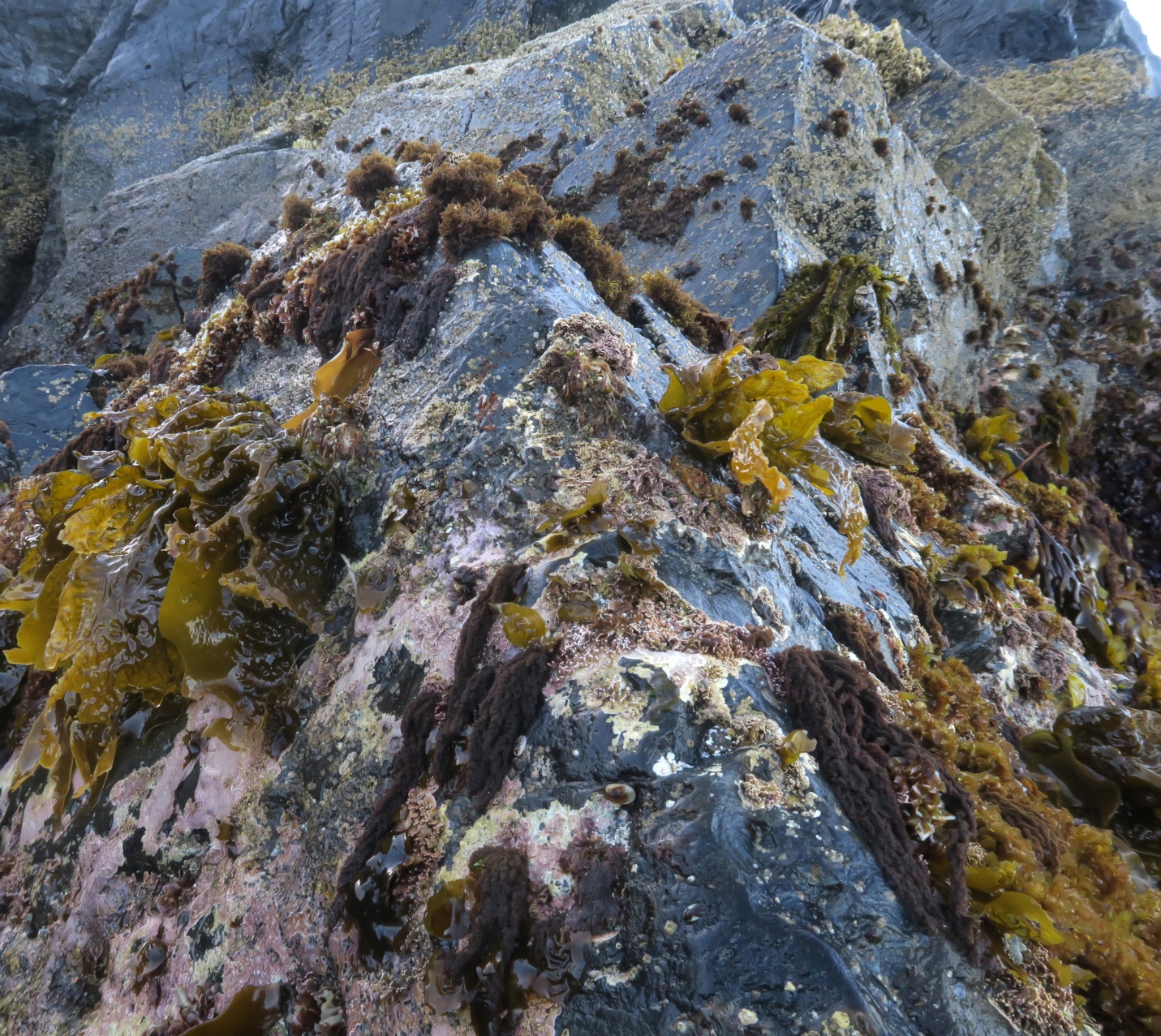
Figure 3: The protruding bedrock here is pictured from the mid-intertidal level and higher. In the foreground there are at least eight or nine clusters of Callithamnion pikeanum. Stepping higher up the bedrock, several large bladed kelps, the bullate Sea Cabbage are growing, and furthest from the tide’s reach are some more dark brown Callithamnion seaweed – they are just below the smaller, rounded, tawny brown colored clumps of Nail Brush Seaweed, Endocladia muricata. Callithamnion pikeanum is indeed a species that can do well at very high intertidal locations, especially when situated on open coastlines. Tonquin Beach, Templar Channel, Vancouver Island, BC, Canada. May 9, 2024. Photo ID 27688 ©Seaweedwhisperings.com
Discussion:
Likes to think it wants to show off, but holds back - they alternate with being a bit more reserved.
The dreadlocks are a distraction from what the ‘inner’ seaweed truly is. Ah..., that’s it, there are parts that they choose to show, notably their dreadlock look, and those dreadlocks also can be a type of “misdirection” that keeps other parts unseen.
What does it feel like to be within those ‘dreadlock’ thalli of yours? Is it safe and warm and cozy? And also perhaps at times it is the opposite – scratchy and irritating like a thick woollen coat? Confining and limiting, perhaps also?
This seaweed needs to maintain its dreadlock “image” and that is a notable constraint. It does not feel certain about striking out in new directions, not at all. It feels unsure that it could do that and continue to do well in its niche.
We enlarged the one or two few photos that show the spiny structure of the tiny branchlets of Callithamnion pikeanum. Most of the time these ‘spiny’ structures hold water between them, and the spines themselves then ‘disappear’ out of view – immersed and gone from view.
This seaweed seems to pour out and down from its holdfast; if it weren’t for its overall woolly/fuzzy appearance, it could be described as limp.
Over several encounters both Person 1 and Person 2 have attempted to have their cameras focus on the detailed and finer structures of this seaweed. It turns out that a slightly drier individual helps in achieving this goal, but also it almost needs to be an “error” of focus or a unplanned “intrusion”, that actually can find and capture the details.
Hiding in plain sight seems to be effective for this seaweed; it even fools the modern auto focus camera mechanisms.
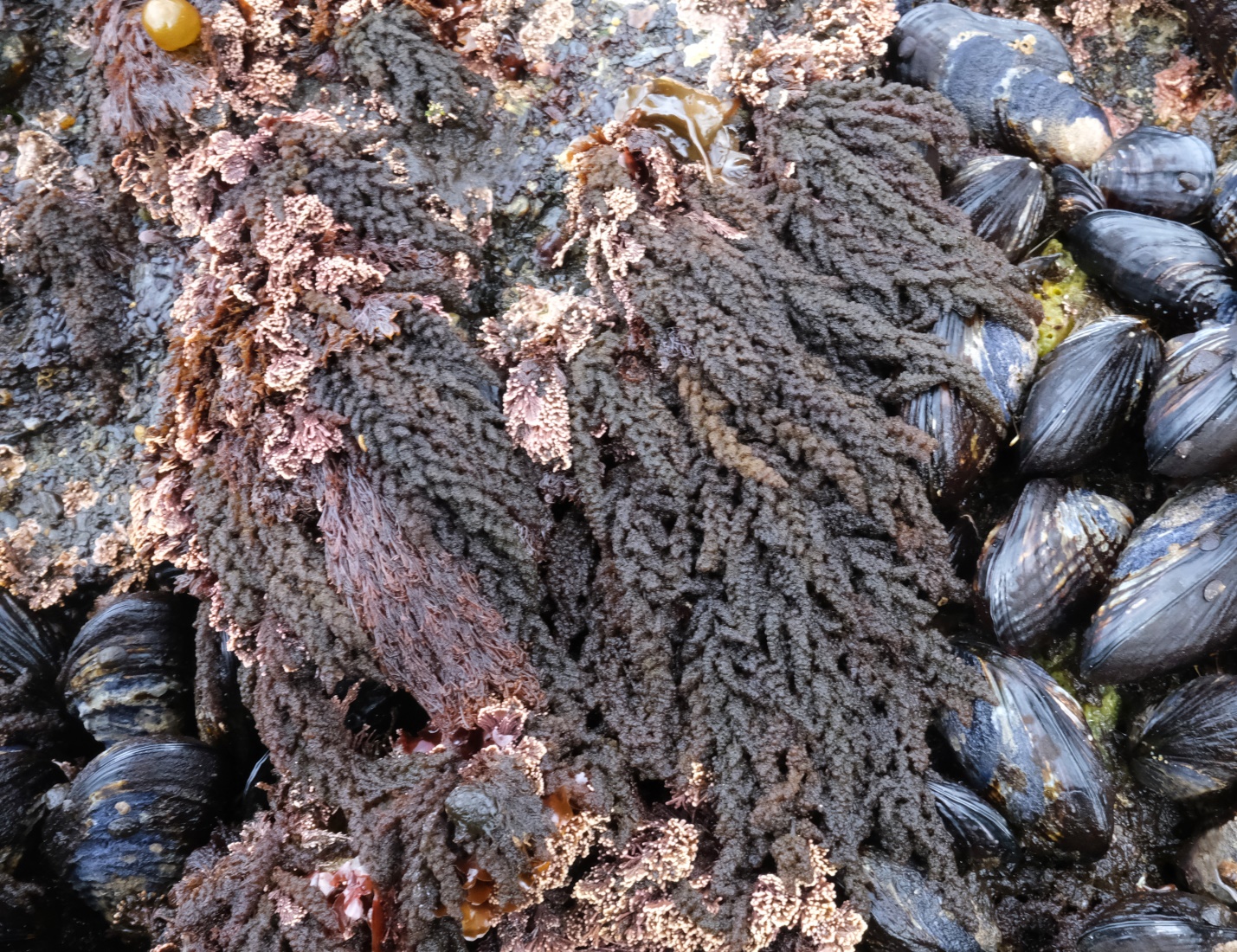
Figure 4: Photographed at another open coast location, Botany Bay, this large grouping of Beauty Bush reveals how some people have come to describe this macro alga as looking like a fir tree lying on its side. It also is reminiscent of very beautifully tended hairstyles including some forms of plaiting and dreadlocks. Here the Beauty Bush seaweed is growing alongside a large colony of California mussels – this association is well known and if one is searching for Callithamnion pikeanum in the wild, mussel beds on open coastlines are a good place to look. Botany Bay, Juan de Fuca Strait, BC, Canada. May 17, 2022. Photo ID 27689 ©Seaweedwhisperings.com
Second immersion:
Person 1:
Ego.
Likes to be noticed for its projected ‘being’ – the image it projects of itself (façade?).
Clings to its image.
Impatient, irritable.
Bristly.
Water obscures detail.
Doesn’t like to be contradicted.
Person 2:
Blunt / rounded leading tips.
Fleshy look, somewhat like a ‘succulent’, to the axes and main branches, all covered in tiny branched proliferations. The proliferations hold water very well, and can only be seen when drier and with magnification.
I find myself still wanting to understand the inner structure of this seaweed. Looked at from a distance, there appears to be a spiral pattern to the branching; examined up close I find that the branch pattern is actually alternate. This is quite a trick – how does Beauty Bush make alternate look spiral?
I let go of the physical exploration and felt the energy of these woolly dreadlocks a bit more..., I found this seaweed had me smiling with lighthearted bonhomie – I felt their affability and easygoing nature come through. Callithamnion was pleased that I could enjoy their company in this way.
Going deeper than that affability, however, that is where Callithamnion was not so willing to venture. They will show interest and give friendly support to others and that very quality keeps their own interests neatly hidden. This may be what the ‘alternate-made-to-look-spiral’ trick is all about; an easygoing attitude which doesn’t pin them down to one view point is very fitting for them. Indeed, they are often not yet certain in themselves about matters and so it’s not possible to openly state them.
This seaweed can grow high in the intertidal zone in the splash zone with mussels and even higher – it has an ability to survive in places that other seaweed species could not. And even when it is living high up on the rocks, you sense that it is doing more than just surviving – it’s living life rather cleverly and with the best style it can muster.
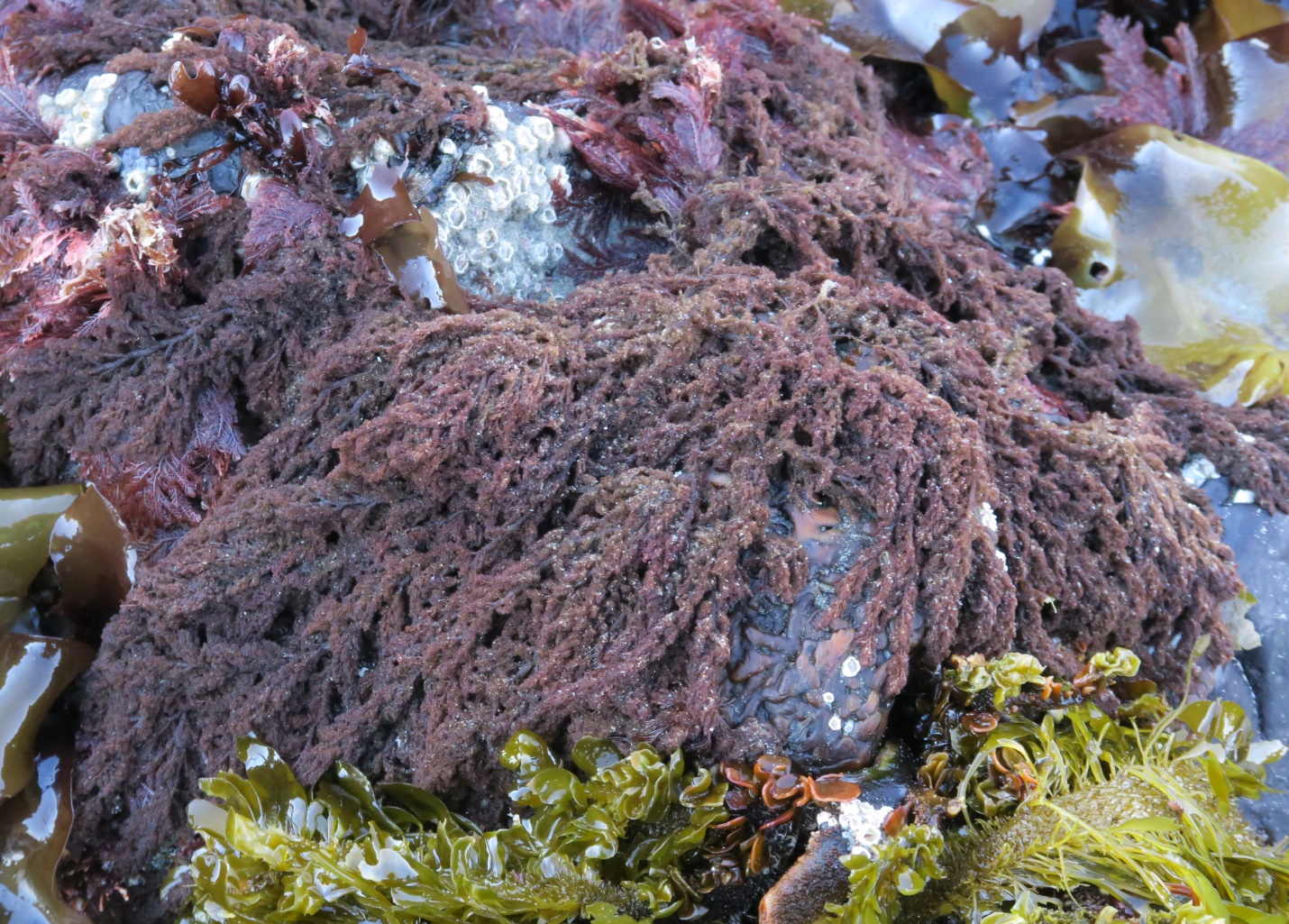
Figure 5: A perennial macro algae, this individual “Beauty Bush” looks as if it’s inhabited the area for a while. It is growing adjacent to Egregia menziesii, so lower in the intertidal zone, and it is also tolerating some sand abrasion here. Tonquin Beach, Templar Channel, Vancouver Island, BC, Canada. May 7, 2024. Photo ID 27690 ©Seaweedwhisperings.com
Discussion:
Our comments seem to keep going back, round again to repeat concepts. This is like the structure of the seaweed, as the growth pattern of the branches has a spiral ‘look’ to it. A spiral involves winding around the same central point and this seaweed does that very well.
The main point is it wants to be seen for who it’s trying to be, like it’s working to create and maintain a particular image. It does NOT want its inner structure or naked self in view.
It also doesn’t want to be challenged.
It wants to be self absorbed; needs to hold things to itself and for itself. And it’s quite busy with all that. Disturbance from that focus then makes them irritable and bristly.
They don’t want to be proven wrong. It is very important to be what they think they are.
We felt their uncertainty; they simply don’t want to be challenged because they’re not yet ready to defend who they really are. They haven’t firmly arrived at that identity for themselves yet – let alone for others.
The tiny proliferations, if you catch a glimpse of them, give the feeling of a V-structure or “finish” at their tips; in other words ending with a “V” is really about having two options to go with. This way or that? Both could be useful and good. And perhaps the challenge and the talent of this seaweed is that they need to embrace both. To achieve that they need to be holding their droplets of sea water close – this gives them a comfortable connection to all their parts.
Given that its habitat includes being in the exposed high intertidal zone, Callithamnion has learned to be very good at holding onto seawater for extended periods. We wondered if this seaweed can grasp, hold, and retain some things that it would do better to let go of. Possibly it clings to its image, spirals around the same image, and doesn’t venture too far from it.
Can it move to something new? And, if it did move to something new, indeed, we feel that the last place that would be visible would be from the exterior – the dreadlocks do their job, with style!

Figure 6: It was a bit of a surprise to see Callithamnion lower in the intertidal zone – it seems this seaweed can be flexible about intertidal zones but it really thrives on the open or semi-exposed coastlines. Here Beauty Bush is tan colored, instead of the deeper brown we found higher up, and it is growing adjacent to Ptilota filicina and Dilsea californica. Tonquin Beach, Templar Channel, Vancouver Island, BC, Canada. May 7, 2024. Photo ID 27691 ©Seaweedwhisperings.com
Biology & Natural History Information:
Description:
A profusely branched thallus with one or more obvious axes that arise from a common discoid holdfast. Branching is alternate though appears radial, and dense, giving the thallus a somewhat woolly appearance. Thallus grows 10 – 20 cm tall, and color is purplish brown, reddish brown, and sometimes tan. The uniseriate branches develop a covering of pigmented cells (cortication) except for the ends of the branches which remain uncovered and terminate in pointed tips. The dense branches are often covered in diatoms.
Habitat:
This perennial is found on bedrock in the high to mid (rarely low) intertidal regions of semi-exposed to exposed habitats. It is often found in the splash zone with California mussels, and even higher.
Distribution:
Aleutian Islands, Alaska, to southern California; Commander Islands, Russia.
Remarks:
Most of the members of this genus are very small and filamentous and can only be identified via microscopic examination; Callithamnion pikeanum is the only species in this genus that develops thickened axes and branches. Callithamnion is from the Greek meaning ‘beautiful shrub’ and some observers note that the much branched and woolly appearance of this seaweed is reminiscent of a miniature fir tree lying on its side – hence the common name “Beauty Bush”.
Classification:
Phylum: Rhodophyta
Class: Florideophyceae
Order: Ceramiales
Family: Callithamniaceae
Genus: Callithamnion
Species: Callithamnion pikeanum Harvey 1853
Other name(s) & synonyms:
Ceratothamnion pikeanum f. laxum Setchell et Gardner; Callithamnion pikeanum var. pacificum; Callithamnion arborescens.
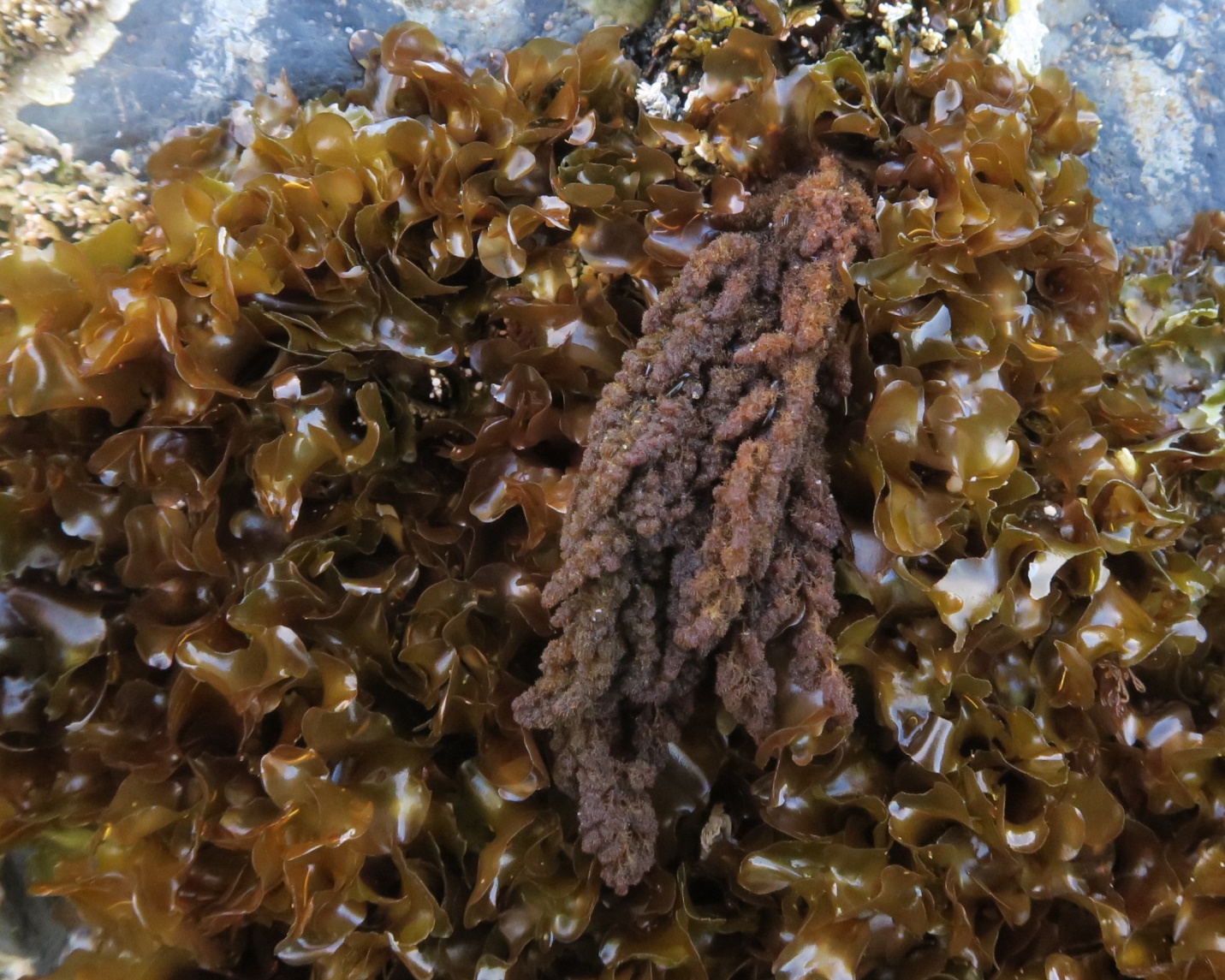
Figure 7: This grouping of Callithamnion pikeanum is growing on rock with the Frilly Turf Weed, Mazzaella parksii. Two peas in a pod, they both love exposed coastlines and can grow high in the intertidal. Tonquin Beach, Templar Channel, Vancouver Island, BC, Canada. May 8, 2024. Photo ID 27692 ©Seaweedwhisperings.com
A footnote of interest:
While compiling and editing the report for this Whispering we came across a BBC News article [published on-line; 19 June 2024] which was entitled: “Ugandan designer ‘depressed’ after dreadlocks cut in jail”. It was reported that Latif Madoi, a winner of African fashion awards, was arrested at his fashion academy and some of his finished garments and sewing machines were seized. While in prison and awaiting trial, his hair was cut – this is standard procedure for all prisoners. The lawyer for the accused had reported that Madoi is depressed and one of the main reasons relates to having to “cut off the dreadlocks that he spent 17 years growing” – these dreadlocks, Madoi says, “were key to his Rasta identity”. Once described as “a revolutionary garment designer of the first degree”, Mr. Madoi founded his fashion academy with the ambition to give his students “skills to get by in life, earn enough money to do more than survive”. His case has not yet had a court hearing (as of mid-June 2024), but whatever the outcome, BBC’s article concludes that “the cutting of Mr Madoi’s dreadlocks means he will be reminded of his experience every time he looks in a mirror for a long time to come”.
It is interesting to see some Callithamnion concepts mirrored here in this Ugandan man’s situation. One is the concept of desiring to be known for their projected identity – in this case, the dreadlocks; and, two, the concept of knowing (or wanting to teach) how to be doing more than surviving in life.
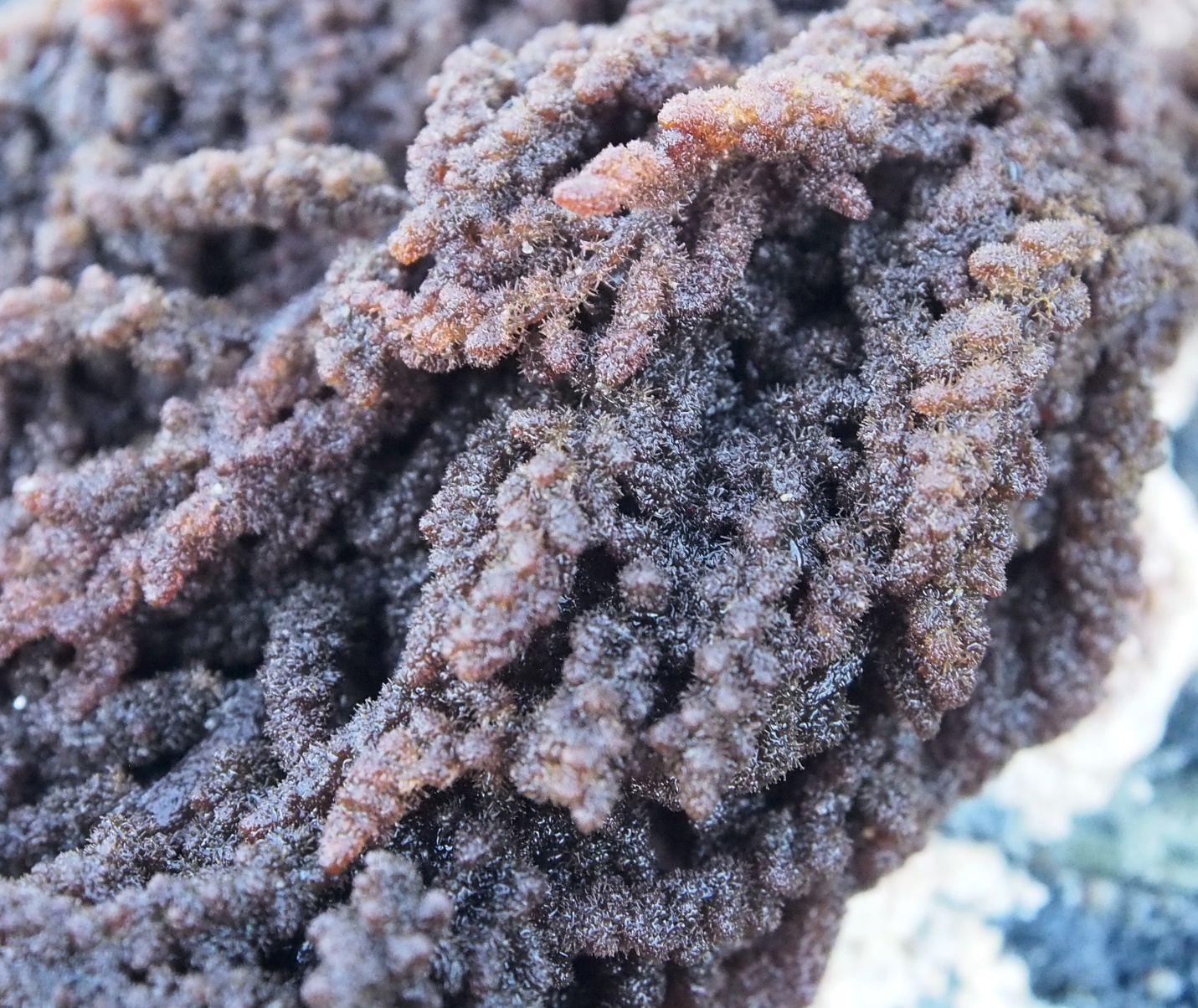
Figure 8: Some details are revealed – the Callithamnion ‘dreadlocks’ are enlarged in this image. Tonquin Beach, Templar Channel, Vancouver Island, BC, Canada. May 9, 2024. Photo ID 27693 ©Seaweedwhisperings.com
![]()